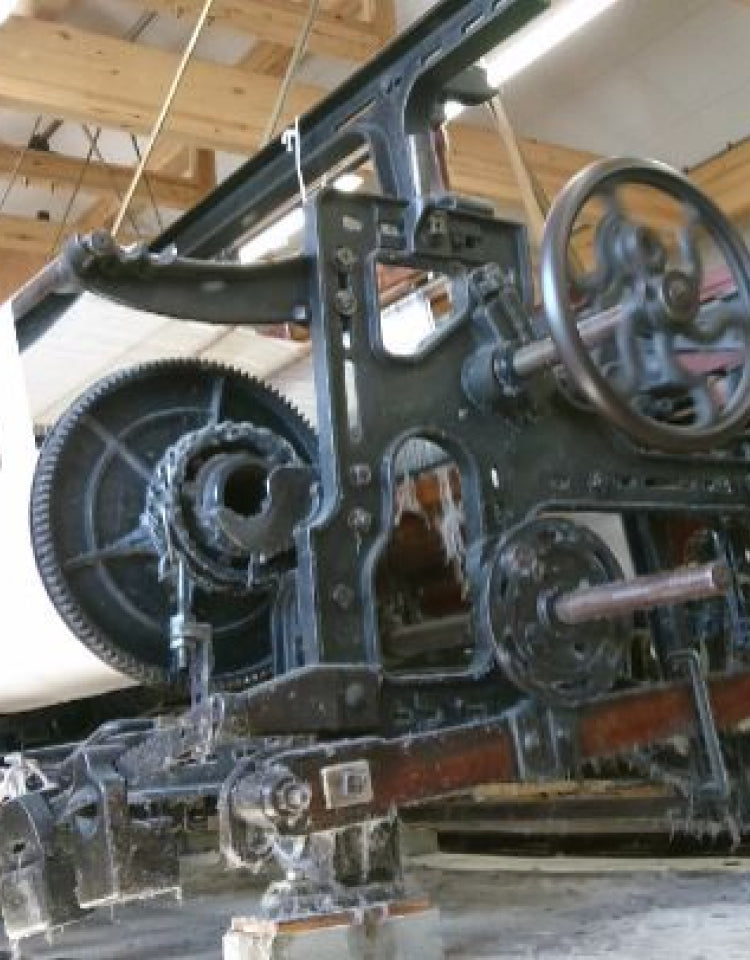
What is MAEKAKE?
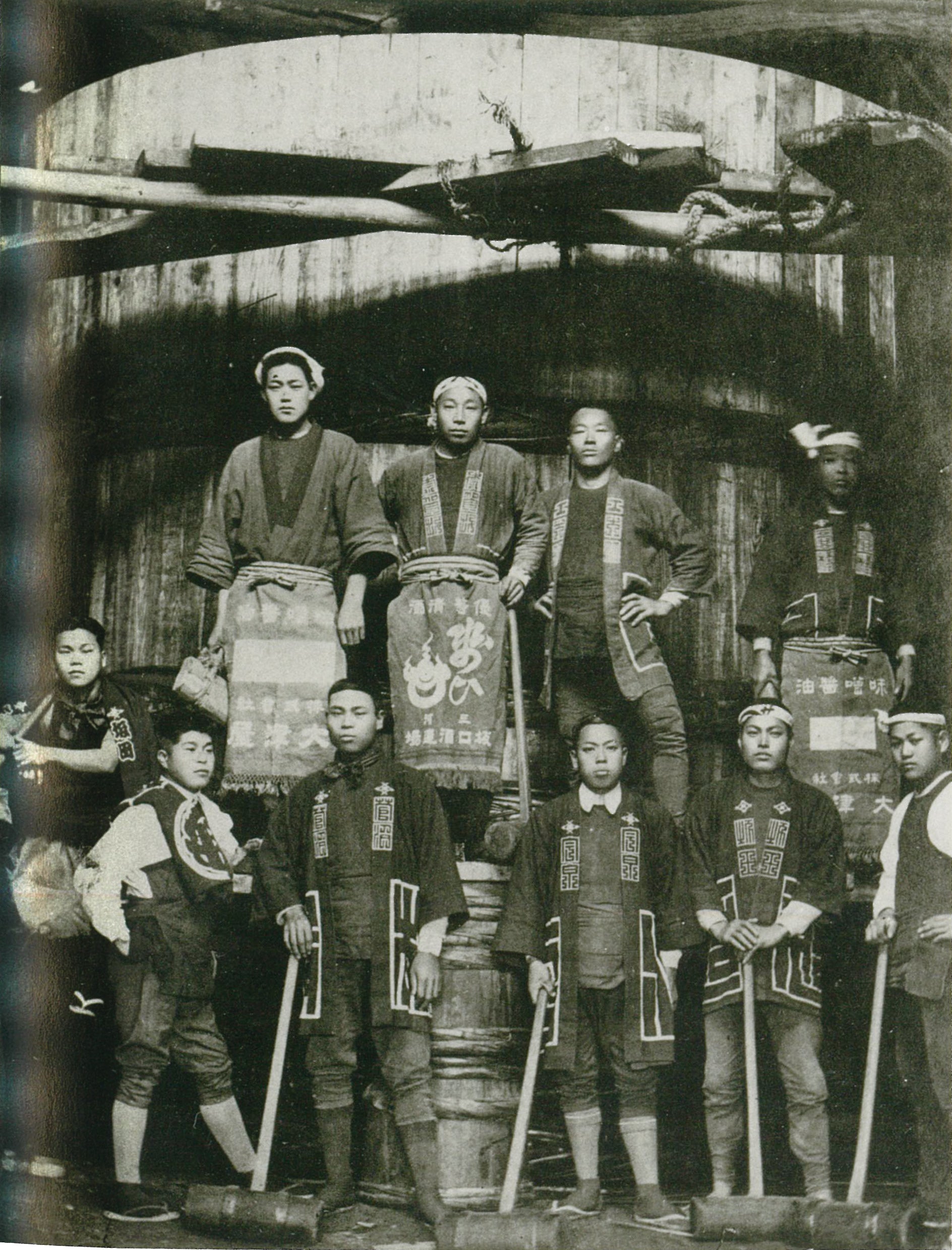
History of MAEKAKE
"MAEKAKE" is a traditional Japanese workwear worn around the waist by people working in rice shops, liquor stores, and other stores.
Woven from thick cotton threads, sturdy sail aprons are classified as heavy cotton fabrics.
The origins of Japanese aprons are said to date back to the 15th century (there are various theories).
They are called "MAEKAKE" or "MAETARE" because they are worn (hanging) in front of the body, and have been valued for their practical use as they protect the waists of workers and prevent tears in clothing and injuries.
It took on its current form during the Edo period, and from the Meiji period onwards, the shop name was dyed into it and it came to be used as a uniform and for advertising purposes.
In Toyohashi, Aichi Prefecture, the top aprons producing area in Japan, aprons exploded in popularity after the war from the 1950s to 1970s. According to Hidesuke Sugie, chairman of the Toyohashi MAEKAKE Promotion Association, "at its peak, 10,000 MAEKAKEs were shipped per day."
As Japan's economy grew, the production of aprons also increased rapidly, and starting with sake breweries across the country, MAEKAKEs bearing the names of companies and stores in all kinds of industries, such as rice shops, miso shops, soy sauce shops, fertilizer stores, and food manufacturers, began to be made, and they spread throughout the country.
It has a simple design - a rectangular piece of thickly woven cotton fabric with red and white strings attached - but hidden within it is a wealth of wisdom from our ancestors.
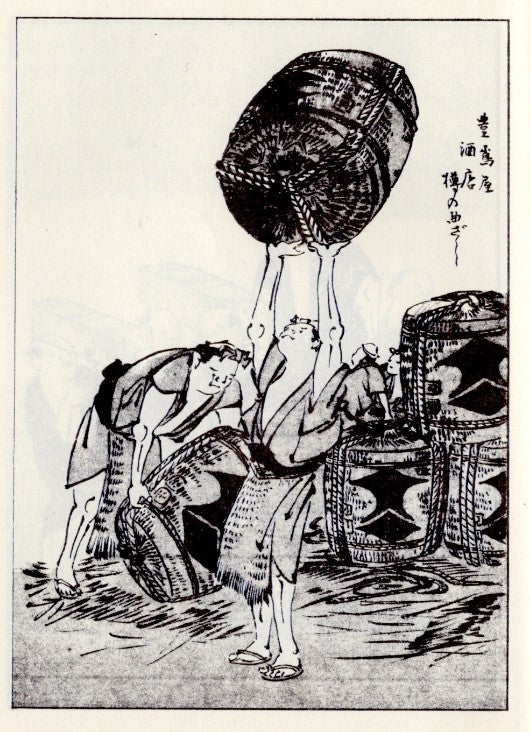
Features of MAEKAKE
The number one role of an MAEKAKE is to protect the lower back. The pelvis is a very important part of balancing the body. Many people have said from their long-standing experience that "if you wear an MAEKAKE, you won't hurt your lower back no matter how old you are." It tightens the pelvis and the tanden (three inches below the navel), so you can get motivated when you're working.
In the past, sake cases and beer bottle cases were made of wooden boxes, so when carrying them, people would wear MAEKAKEs on their shoulders to prevent their clothes from getting torn. Recently, cardboard and plastic cases have been used, so this kind of behavior is no longer seen...
Although they are not fireproof, the MAEKAKEs are made of thick material and protect you from injury and heat. They are used by potters, and glass factories use them in double layers...
And finally, the major role of MAEKAKEs is for advertising. Historically, they were most commonly used by sake and shochu breweries. Even today, original aprons from each store are popular!
How to wear MAEKAKE
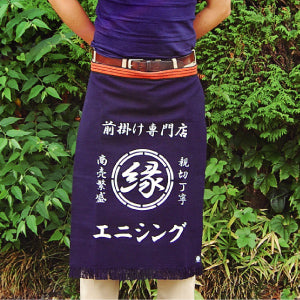
STEP1
Tighten the bone called the ilium, which sticks out just above the pelvis at the "belt" level. This is the position above the most protruding hip bone. You can also tighten the pelvis 3-4 cm below the ilium (about two fingers below). Tightening the pelvis will stabilize the hip joint.
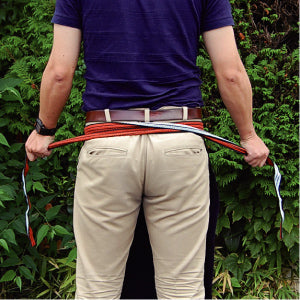
SETP2
Next, take a deep breath and exhale slightly, cross the strings behind your back and squeeze them tightly, then bring the strings to the front.
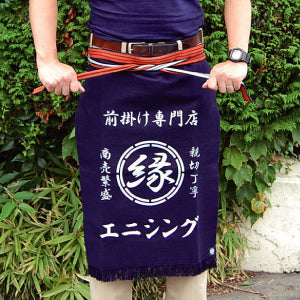
SETP3
Take the string you brought from the back and tie it firmly in front.

